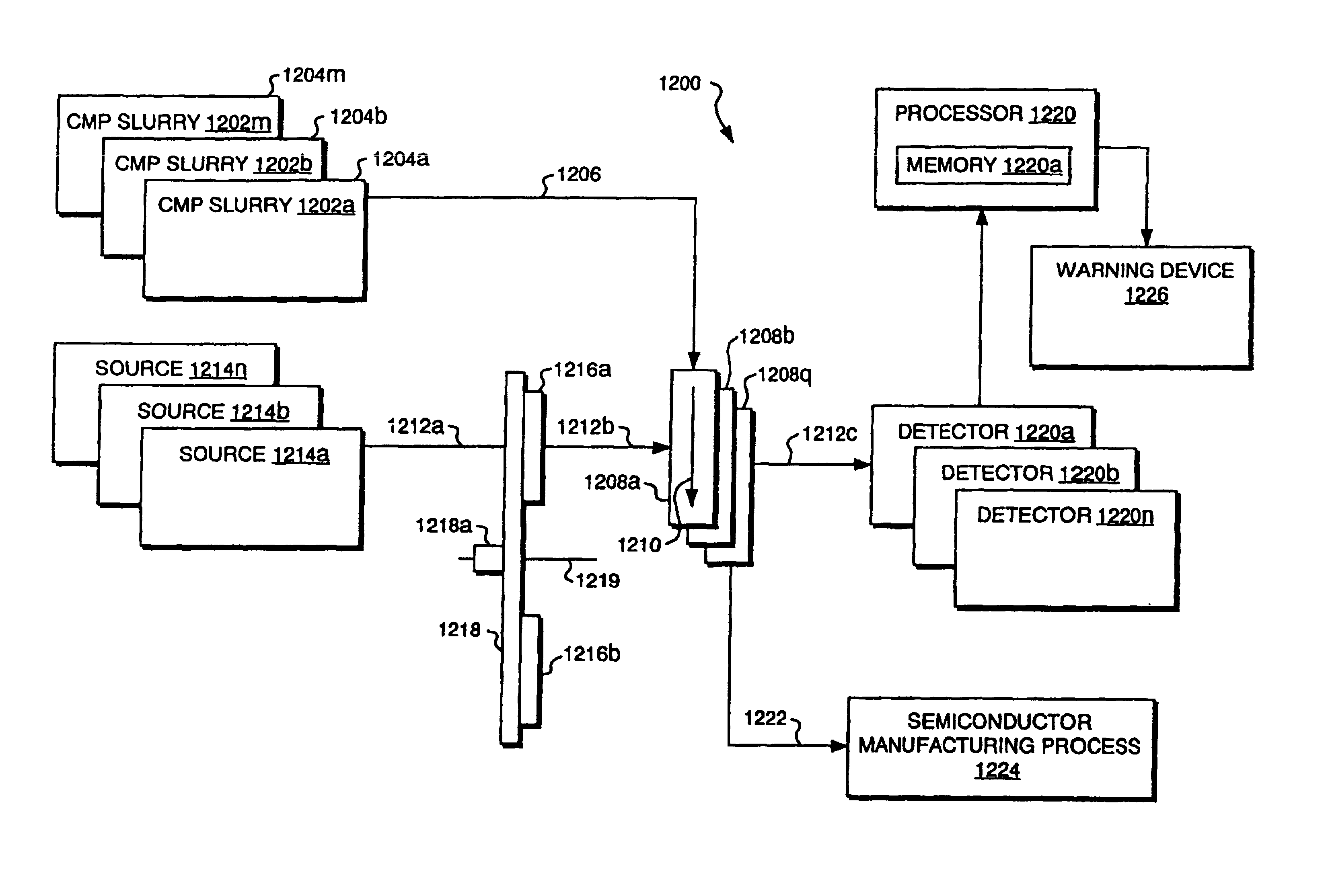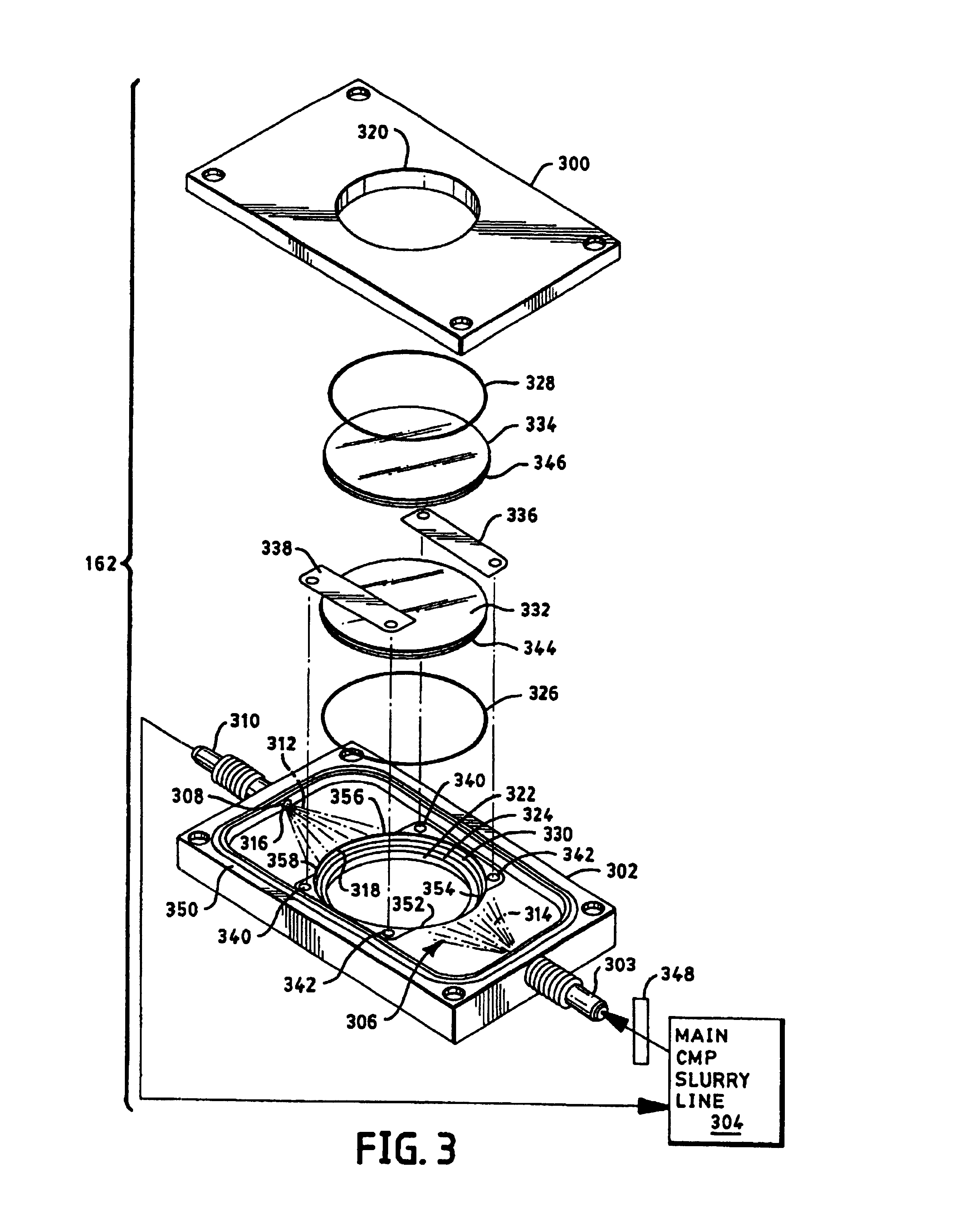Chemical mechanical planarization (CMP) slurry quality control process and particle size distribution measuring systems
a technology of mechanical planarization and quality control process, applied in the field of chemical mechanical planarization (cmp) slurry quality control process and particle size distribution measuring system, can solve the problems of difficult to check the quality of particle size distribution within these slurries, scratching or scratching the surface that is being smoothed, and thereby damage to semiconductor wafers, so as to achieve greater accuracy and measurement
- Summary
- Abstract
- Description
- Claims
- Application Information
AI Technical Summary
Benefits of technology
Problems solved by technology
Method used
Image
Examples
example 2 verification
OF THE MODEL WITH EXPERIMENTAL RESULTS
[0092]FIG. 7 shows optical model predictions and experimental data for Cabot SC-1 oxide slurry, which consists of SiO2 partides immersed a pH of 10.3. This sample was diluted to 12% solids by weight, which is the concentration at which it is used for CMP wafer planarization. The particle size distribution used as input to the optical model is plotted in FIG. 8, and represents a modified version of the Cabot SC-1 PSD measured by Bare et al., Monitoring slurry stability to reduce process variability, Micro. Vol. 15, No. 8, pp. 53-63 (1997) (the BH97 particle size distribution distribution probe. A modification to the BH97 particle size distribution consisted of multiplying each particle size distribution size bin by 0.56. The 0.56 factor was chosen to obtain good fit to the measured transmission data.
[0093]FIGS. 9 and 10 show how changes in this distribution size bin factor affect the transmission spectrum, and serve as another indication of the s...
PUM
 Login to View More
Login to View More Abstract
Description
Claims
Application Information
 Login to View More
Login to View More - R&D
- Intellectual Property
- Life Sciences
- Materials
- Tech Scout
- Unparalleled Data Quality
- Higher Quality Content
- 60% Fewer Hallucinations
Browse by: Latest US Patents, China's latest patents, Technical Efficacy Thesaurus, Application Domain, Technology Topic, Popular Technical Reports.
© 2025 PatSnap. All rights reserved.Legal|Privacy policy|Modern Slavery Act Transparency Statement|Sitemap|About US| Contact US: help@patsnap.com



